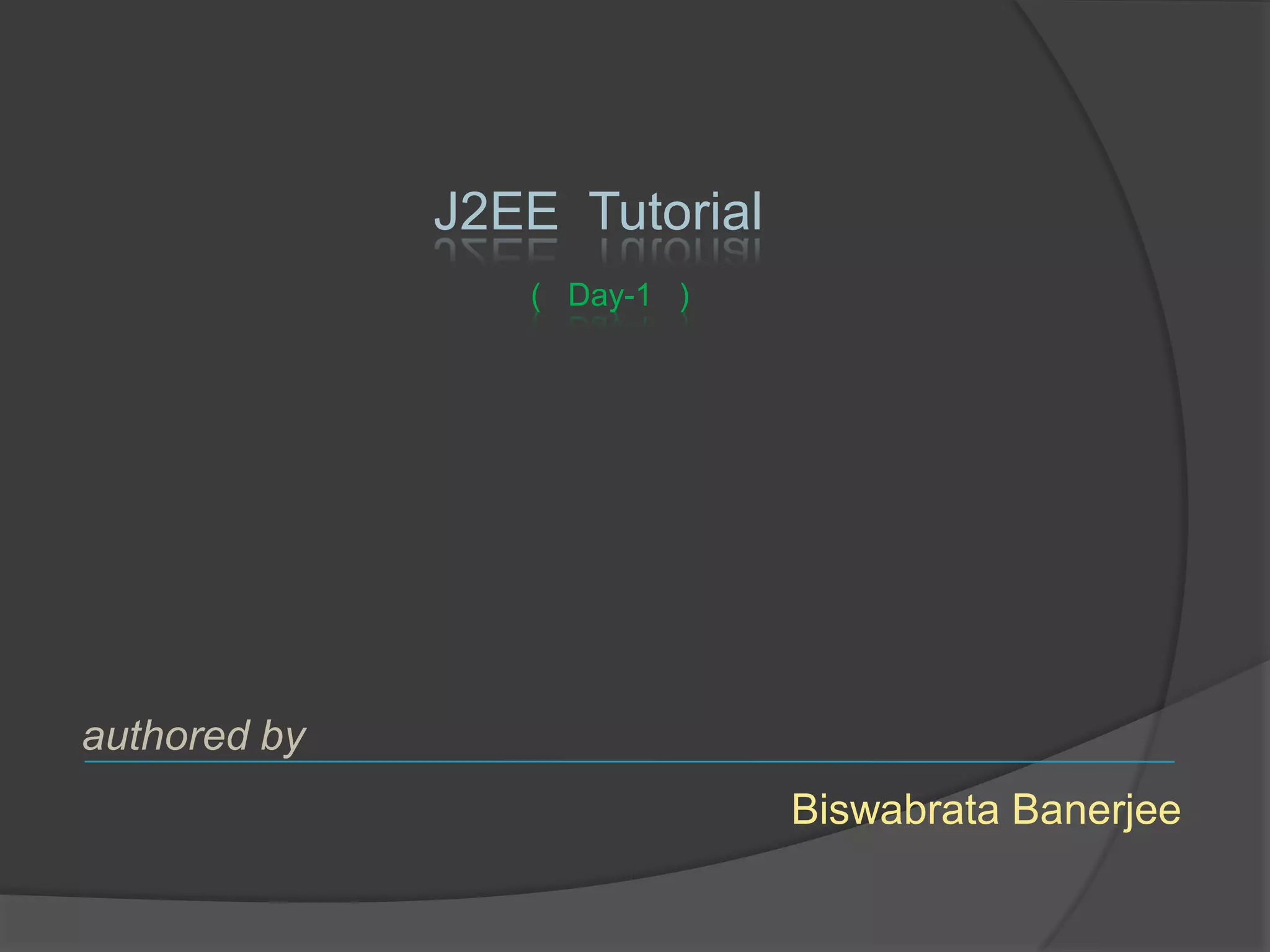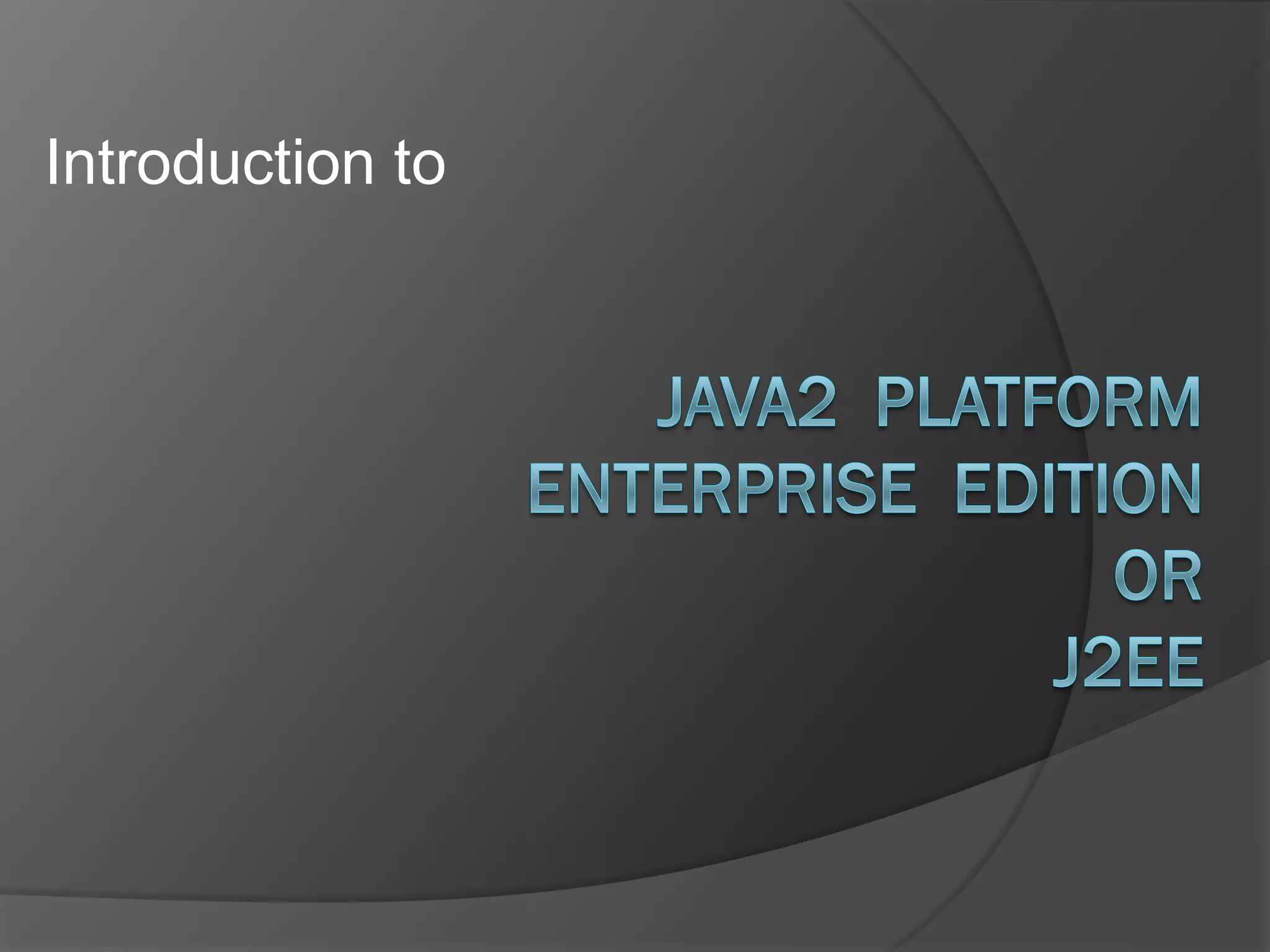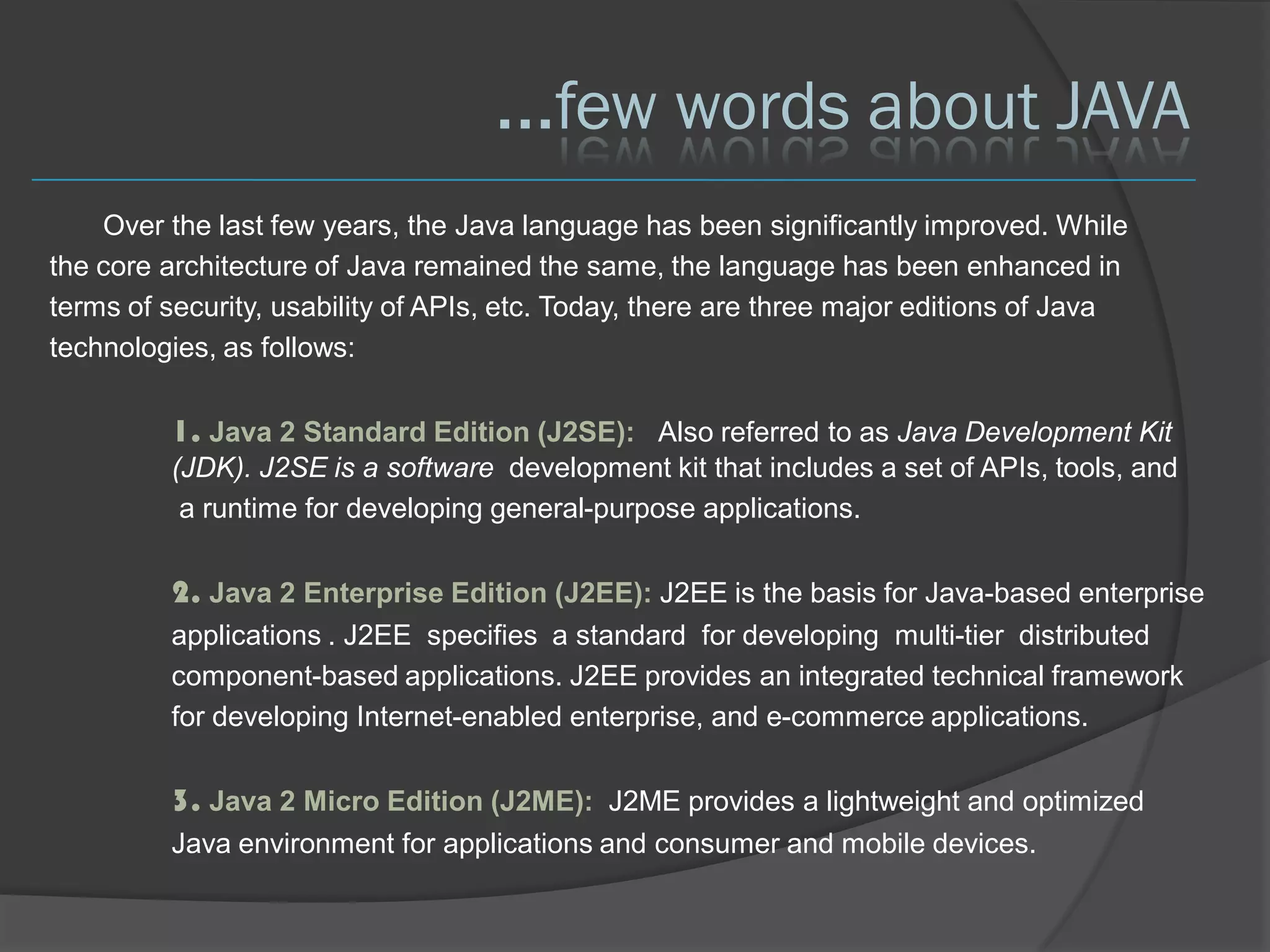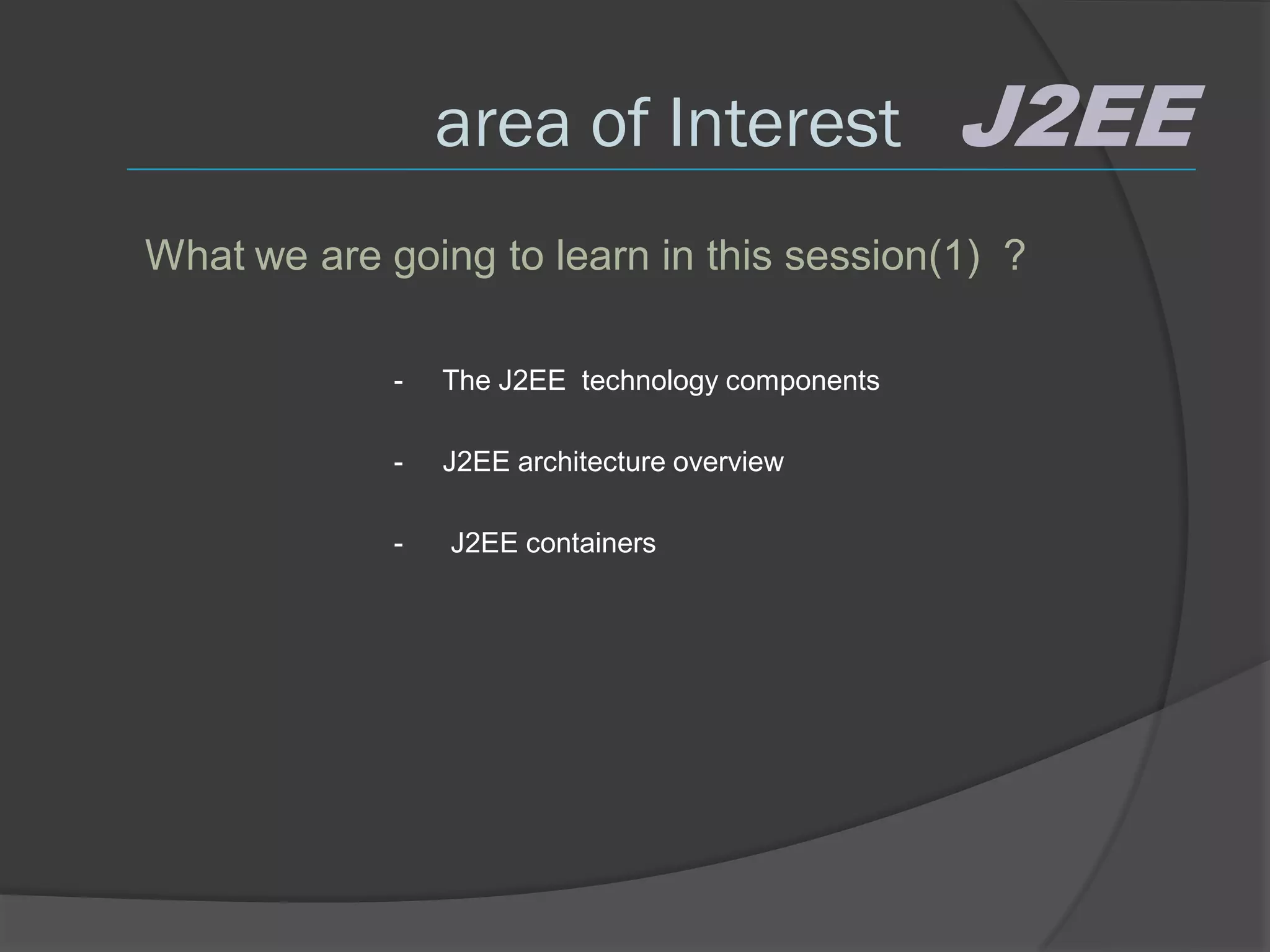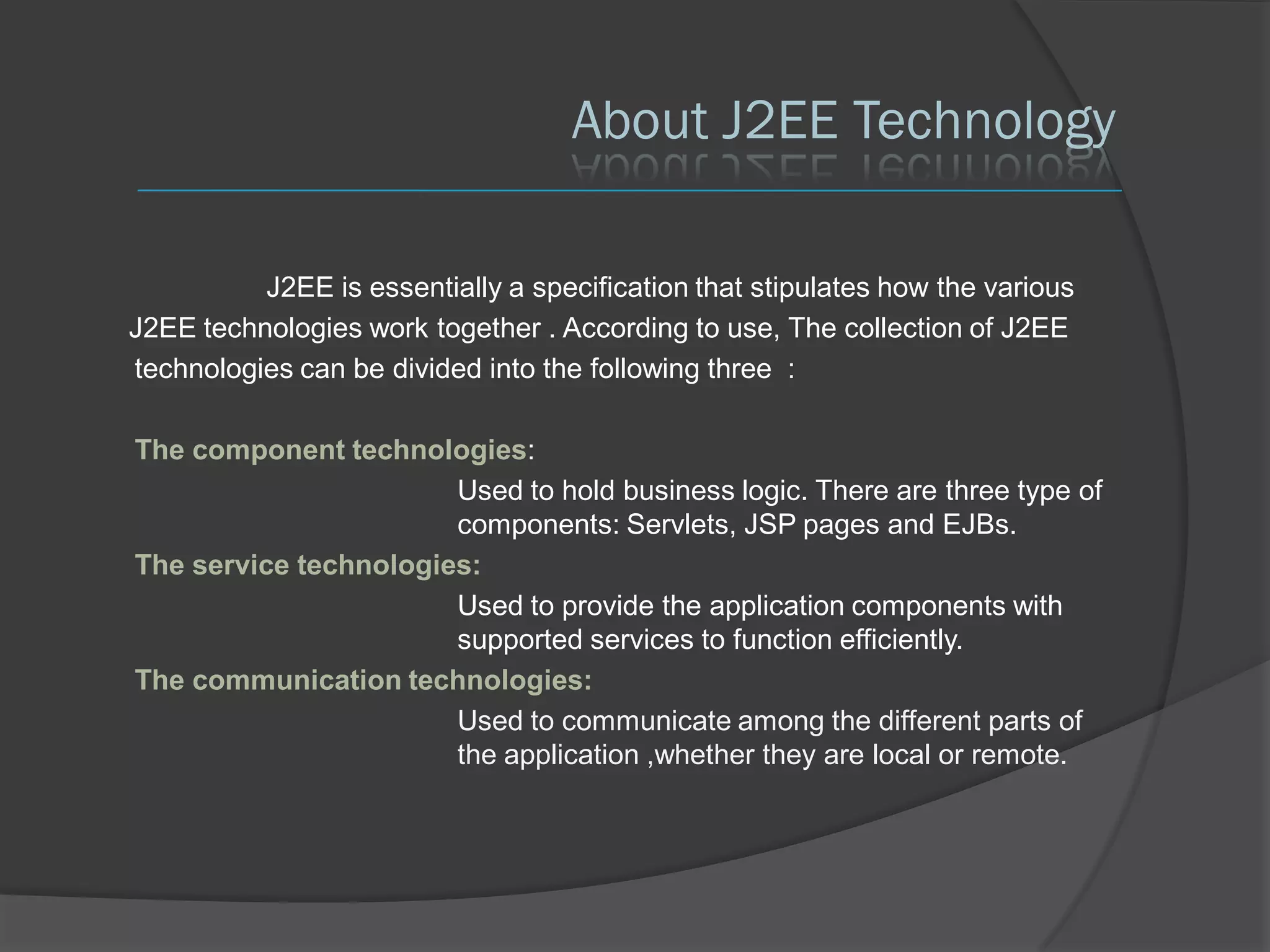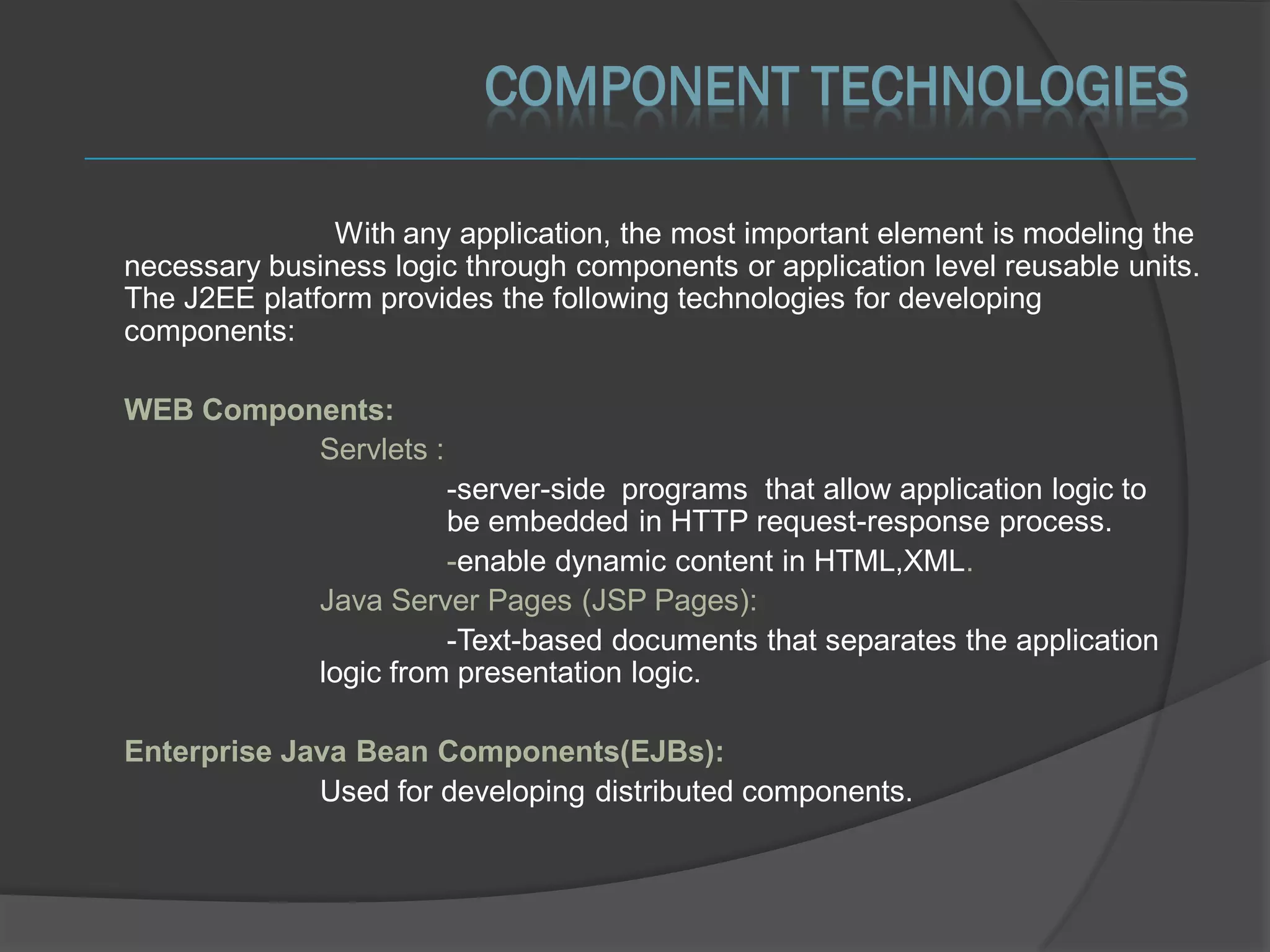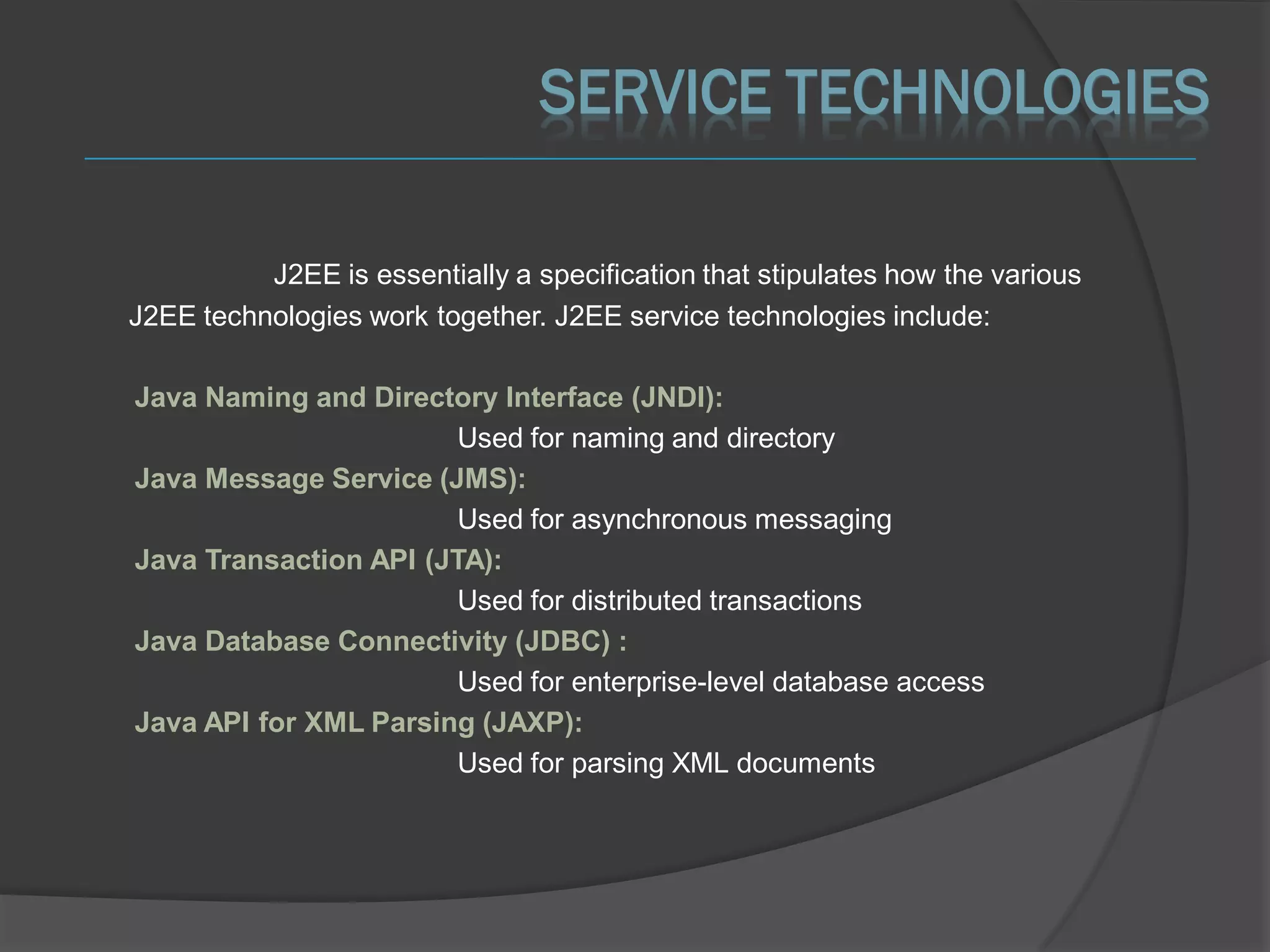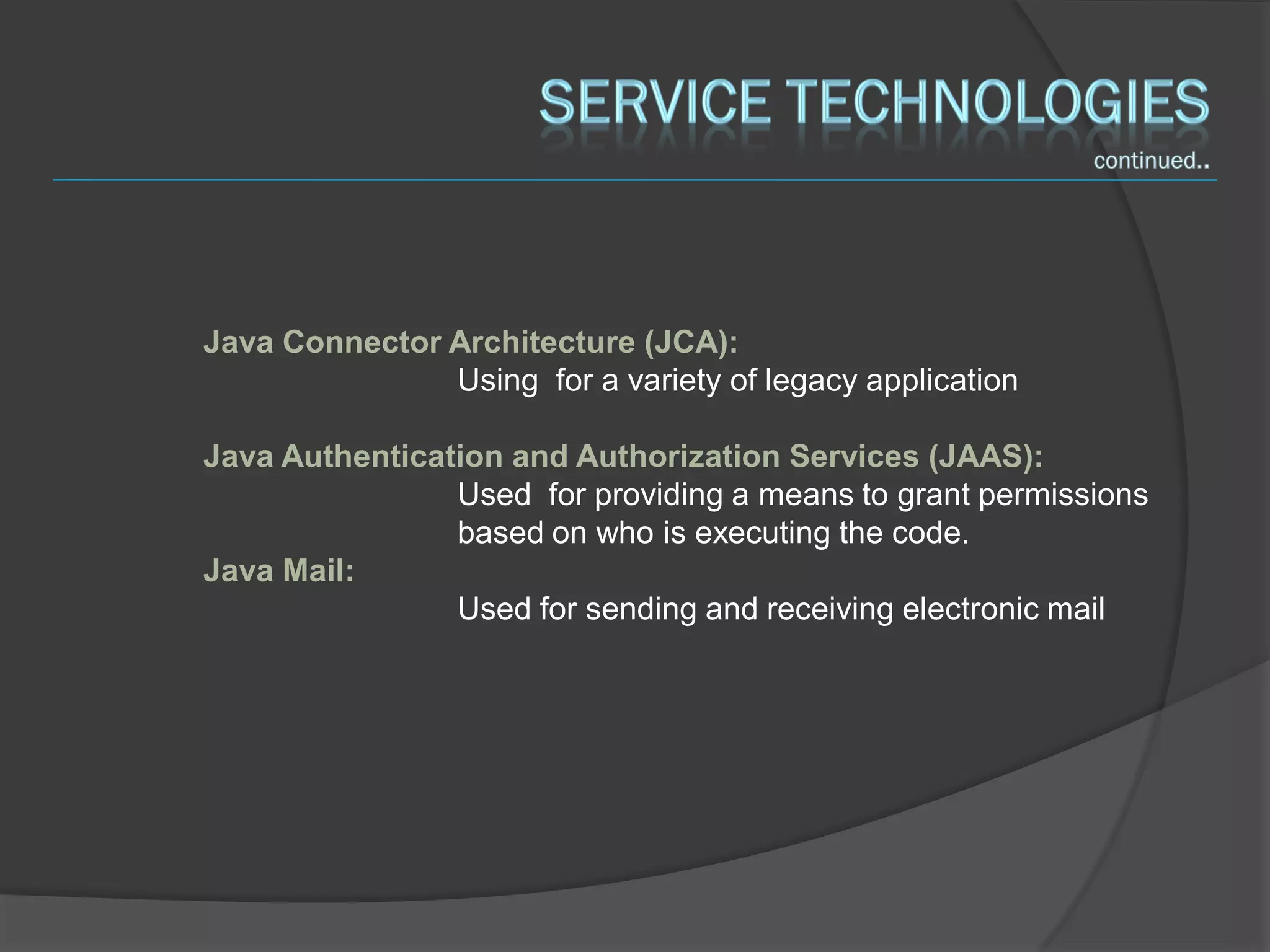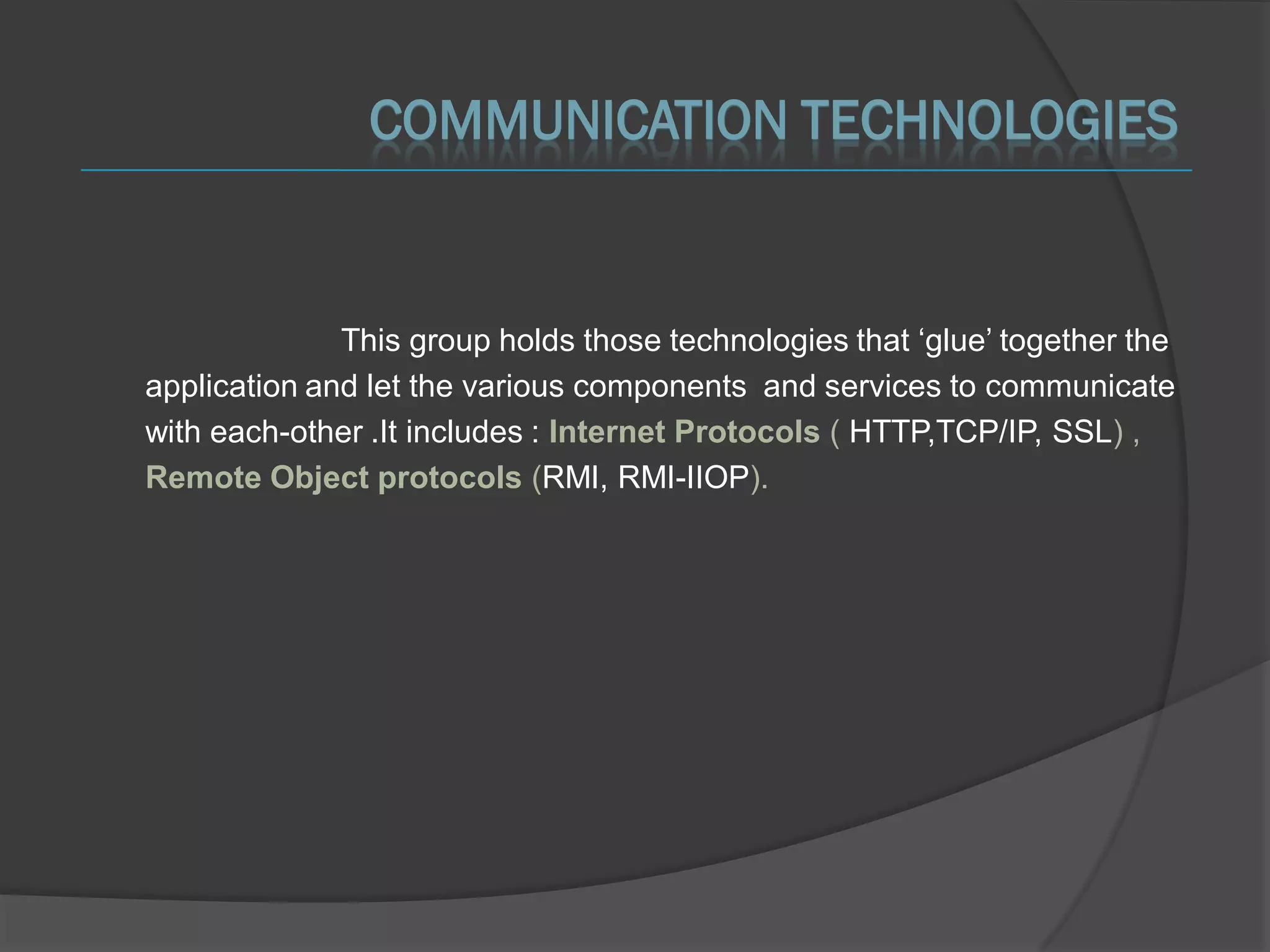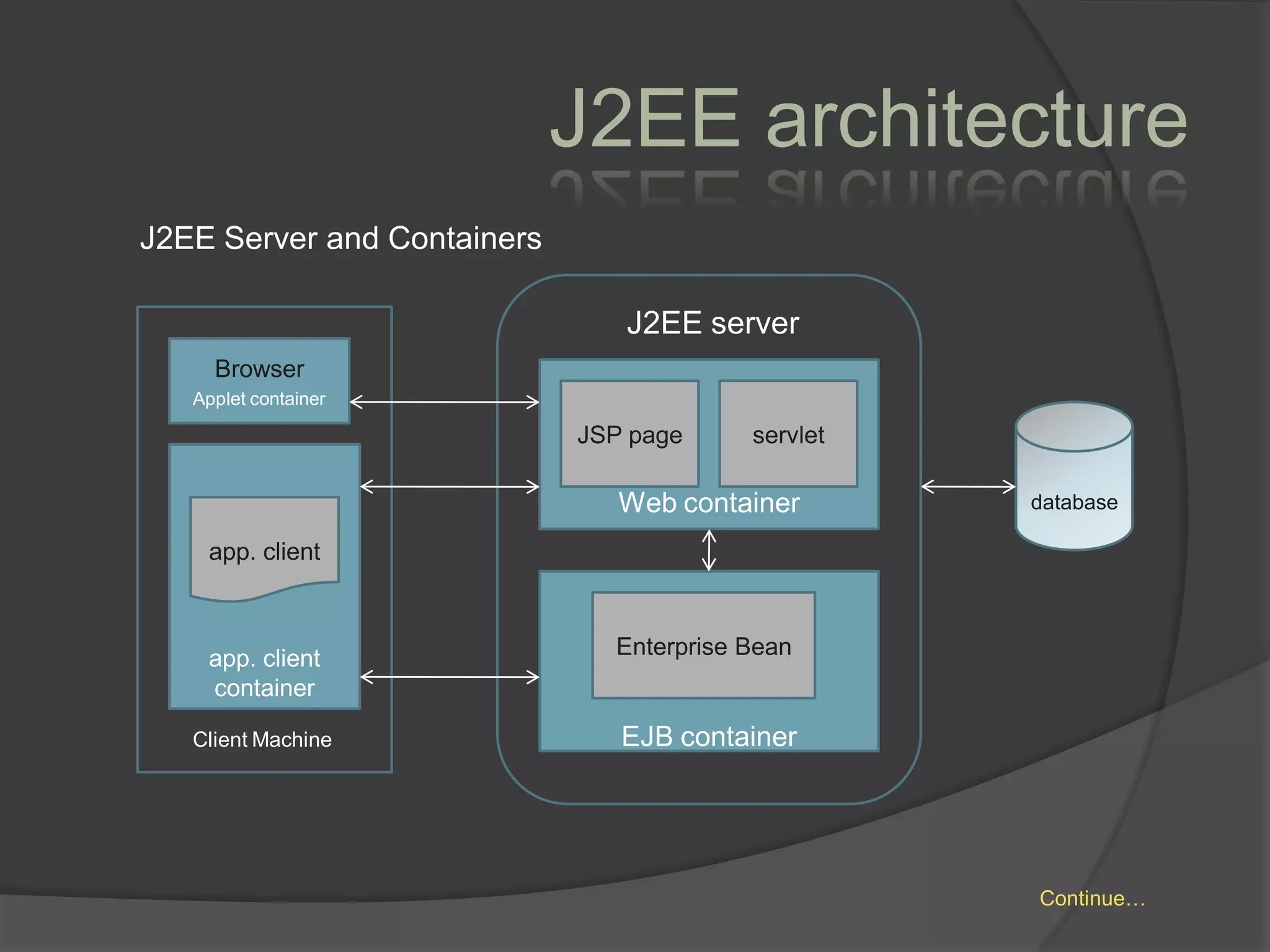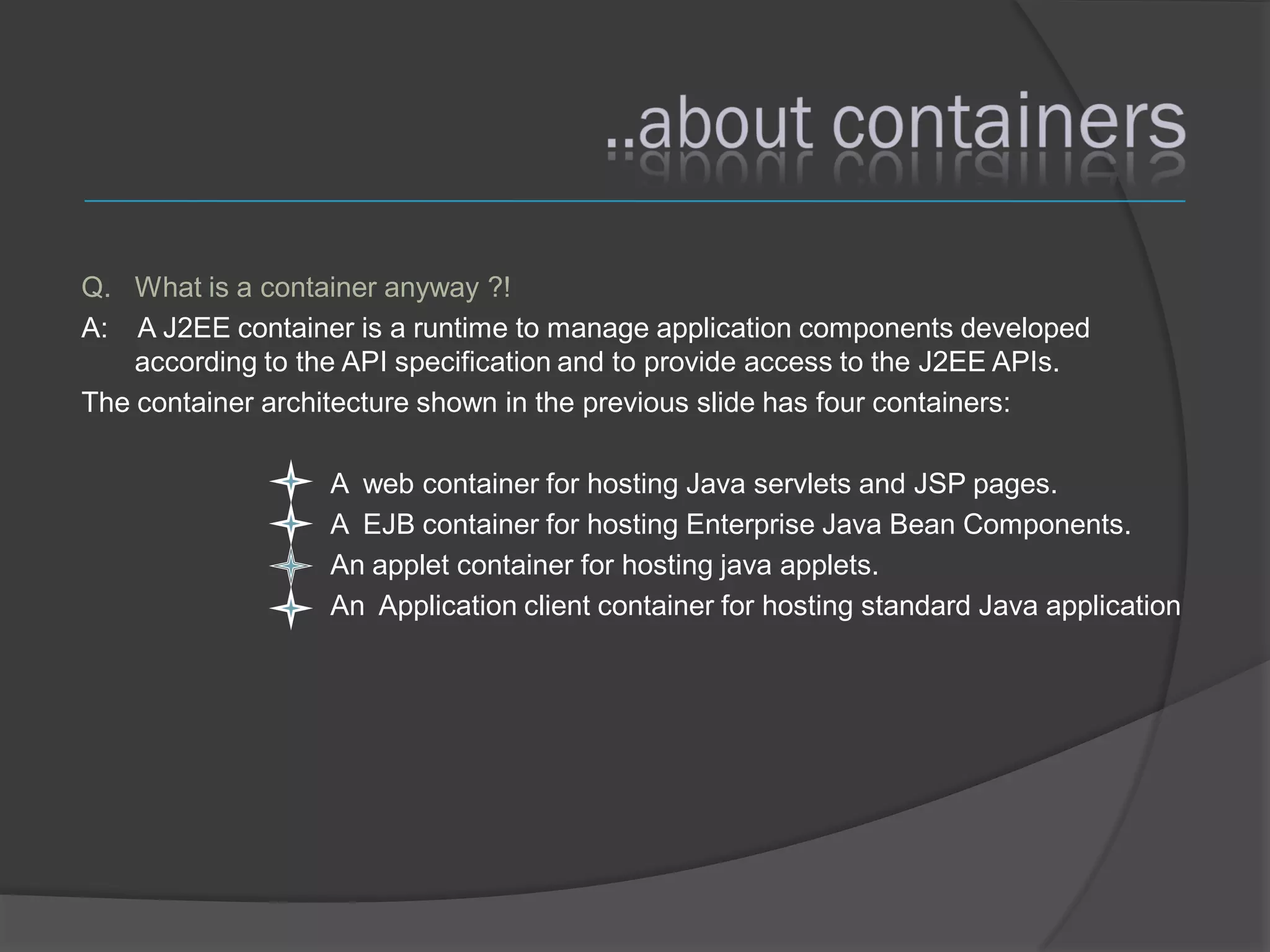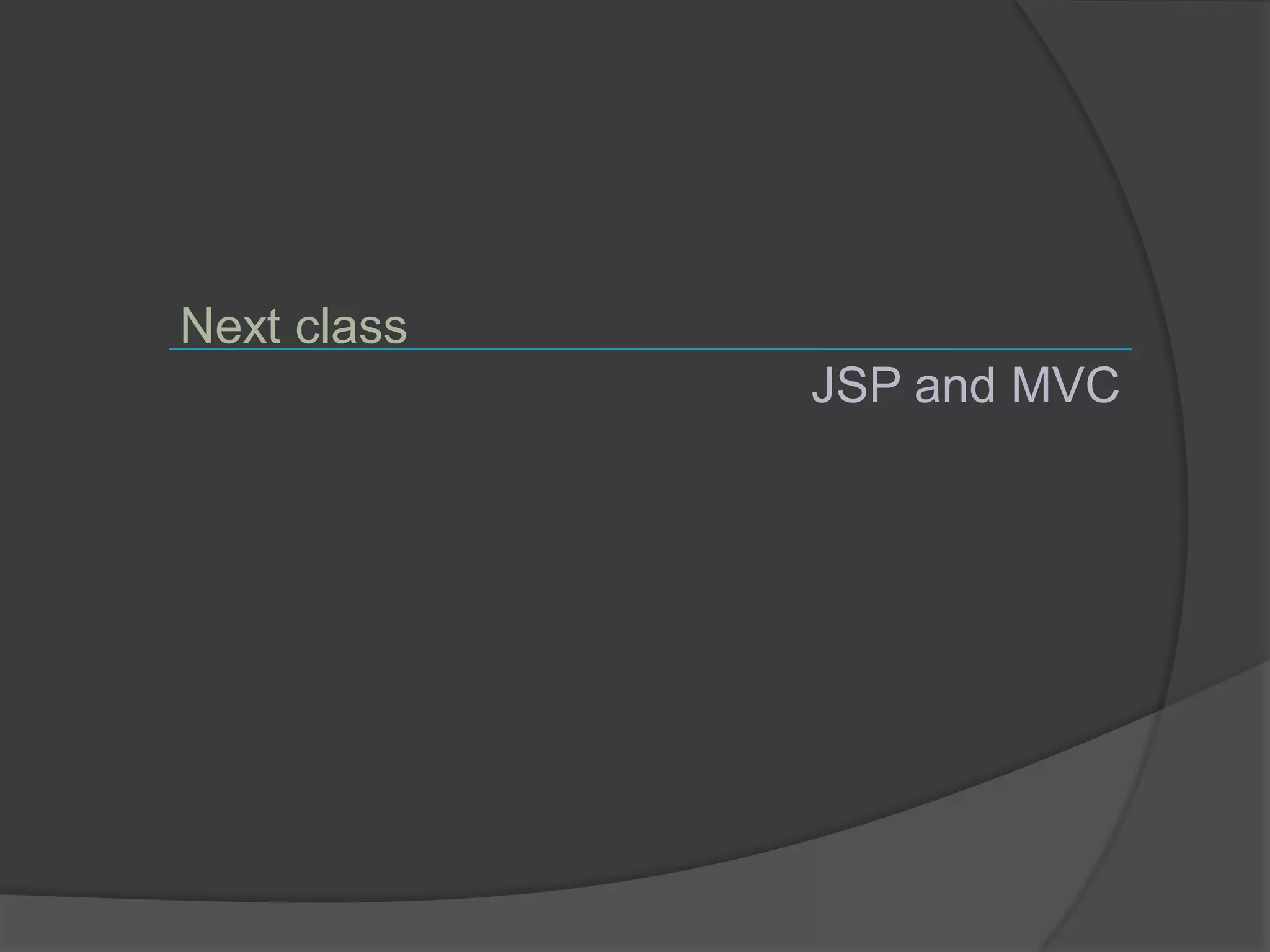This document provides an overview of the J2EE (Java 2 Enterprise Edition) technology components covered in the first day of a J2EE tutorial. It discusses the evolution of Java technologies and introduces the three main editions: J2SE, J2EE, and J2ME. The tutorial will focus on J2EE, which provides an integrated framework for developing enterprise applications. J2EE comprises component technologies like servlets and EJBs, service technologies like JNDI and JTA, and communication technologies. The document explains the J2EE architecture and containers, including the web container, EJB container, and applet container. It defines a J2EE container as a runtime that manages components and provides access to
